Summer wildflowers are coming on strong now. On native or restored prairies, you may find cup plants or compass plants in bloom, along with yellow coneflowers, purple coneflowers, rattlesnake master, blazing star, black-eyed Susan, partridge pea, and several kinds of milkweed, including common, swamp, butterfly, or whorled. Along wooded trails, the purple, star-shaped blossoms of American bellflower are a frequent sight.
This week’s featured plant typically starts blooming in the late spring; in most parts of Iowa, the flowers are gone by July. Canada anemone (Anemone canadensis) is also known as meadow anemone, round-leaf thimbleweed, or windflower. This member of the buttercup family is native to most of North America, except for states in the deep South or west of the Rocky Mountains. It can thrive in a range of usually wet habitats, such as “moist prairies, sedge meadows, openings in floodplain woodlands, woodland borders, banks of streams, and swampy areas.” I took some of the enclosed pictures along bike trails in Des Moines and Clive and others on lower ground at the Tipton Prairie in Greene County.
According to the Minnesota Wildflowers website, Canada anemone “can form sizable colonies via spreading rhizomes.” The Friends of the Eloise Butler Wildflower Garden site advises, “In the home garden it can make a good ground cover beneath trees and shrubs but in a restricted setting it needs control due to its spreading habit. For full flowering potential, it needs a mostly sunny area.” Likewise, the Lady Bird Johnson Wildflower Center’s site notes that this plant “can become quite aggressive in too favorable conditions.”
For botanically accurate descriptions of Canada anemone foliage, flowers, and fruit, I recommend the Illinois Wildflowers, Minnesota Wildflowers, or Eloise Butler Wildflower Garden websites.
Most of the time, each stalk will have only one large, white flower.
Stalks may grow close together.
Not all plants in a colony will bloom at the same time. In each of these next two photos, a Canada anemone bud hasn’t opened yet.
Canada anemone flowers are usually easy to see, but they may be hiding under grasses or sedges.
Here Canada anemone is blooming near a sticky weed that is some kind of bedstraw.
Canada anemone can grow in habitats that also favor poison ivy (near top of this frame), so watch where you step. The yellow flower is from a non-native clover.
Earlier this month, I found some Canada anemone plants with fruit, a “round cluster of flattened, generally oval, beaked seeds.”

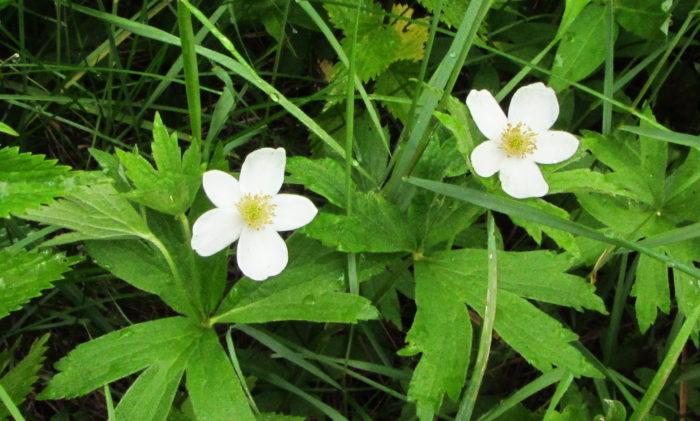

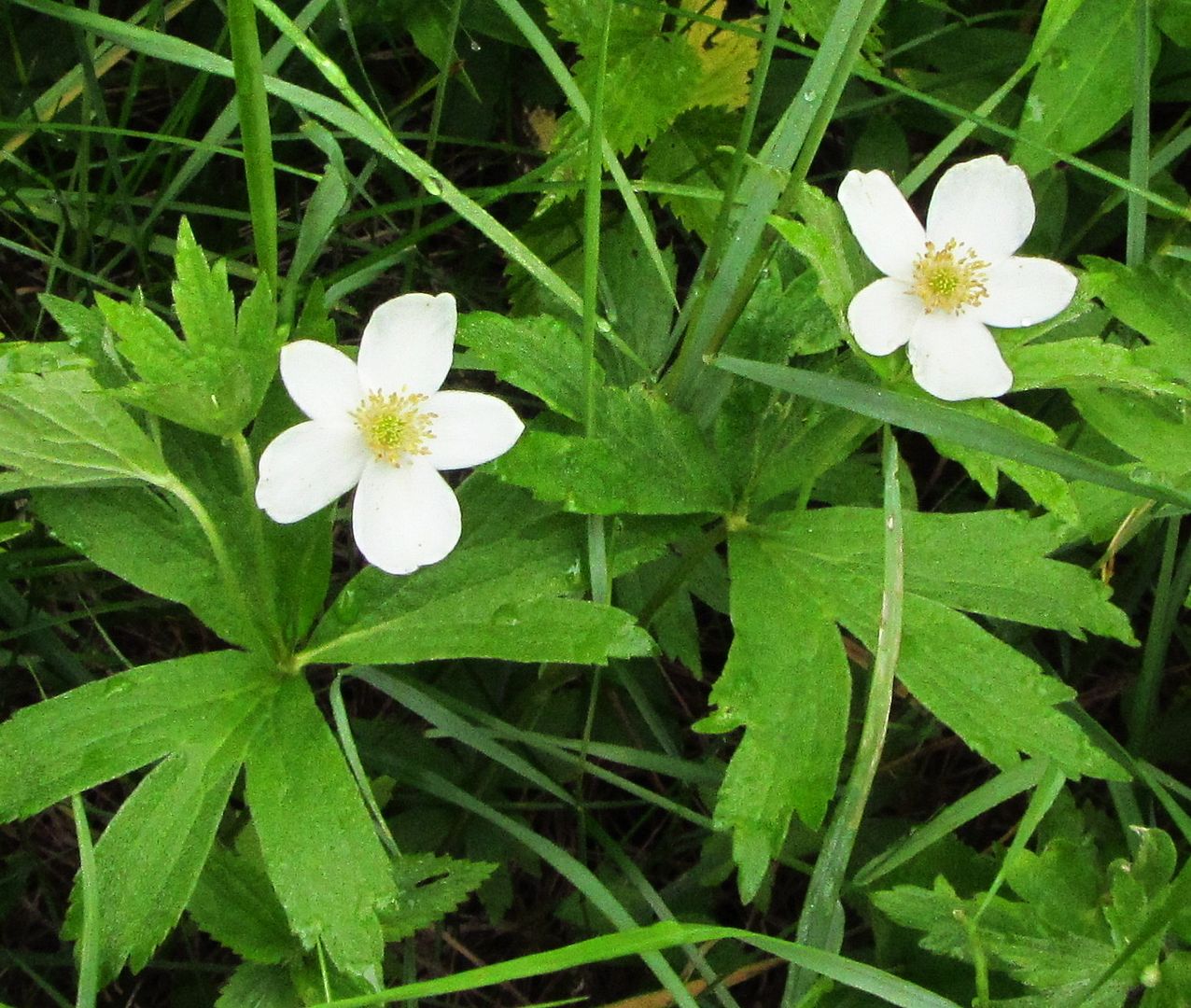
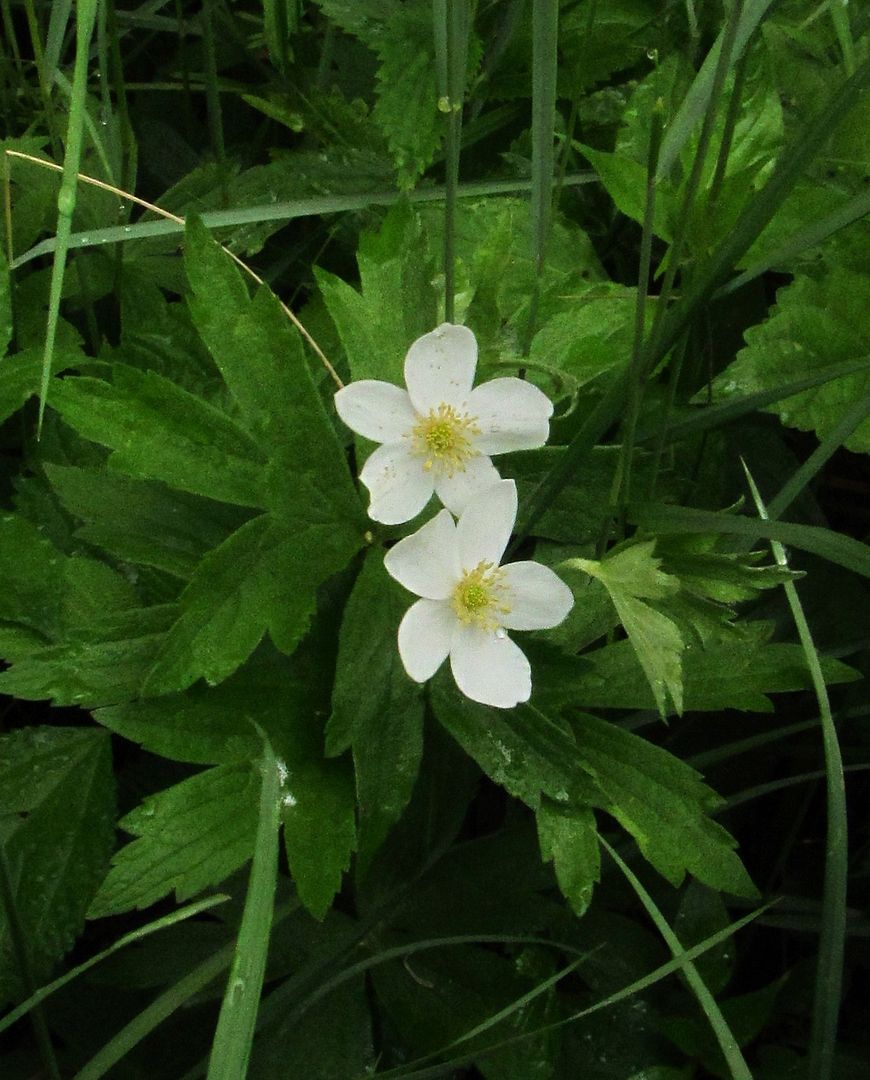
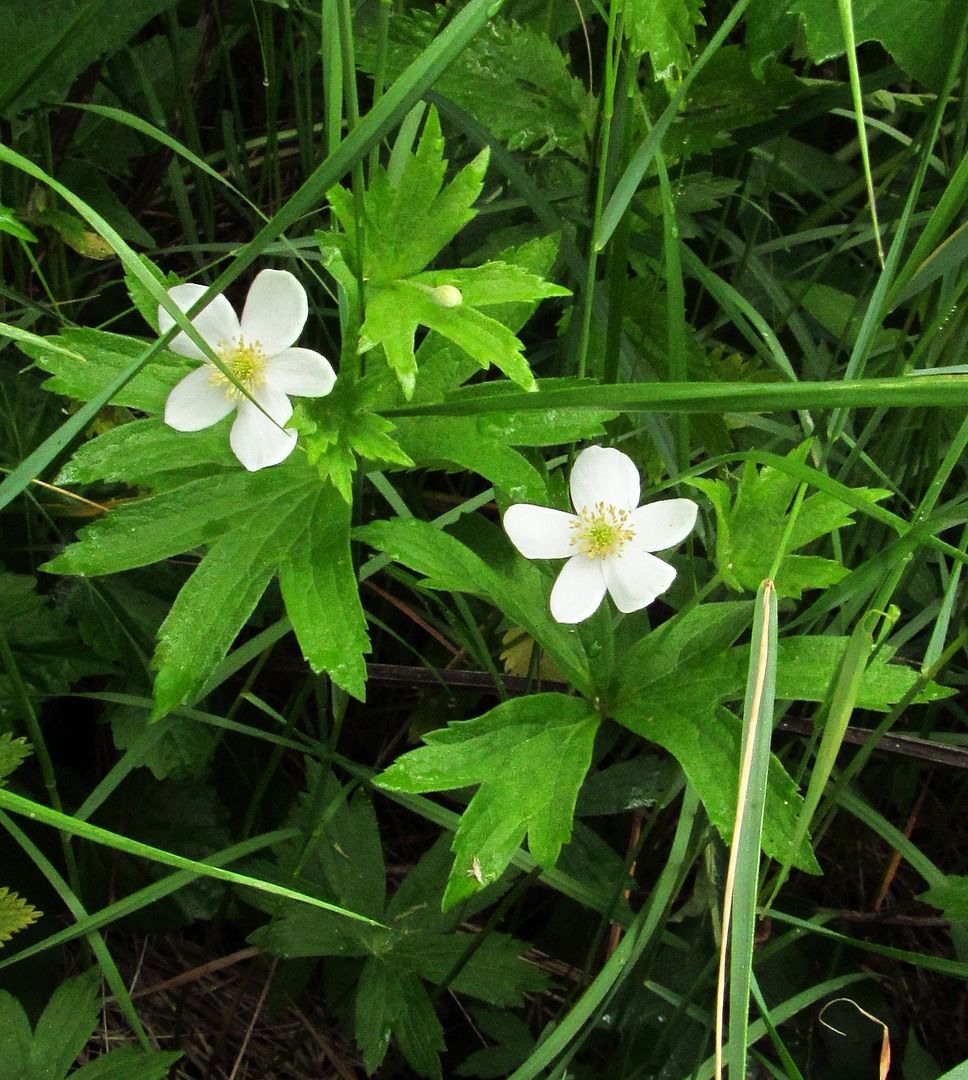
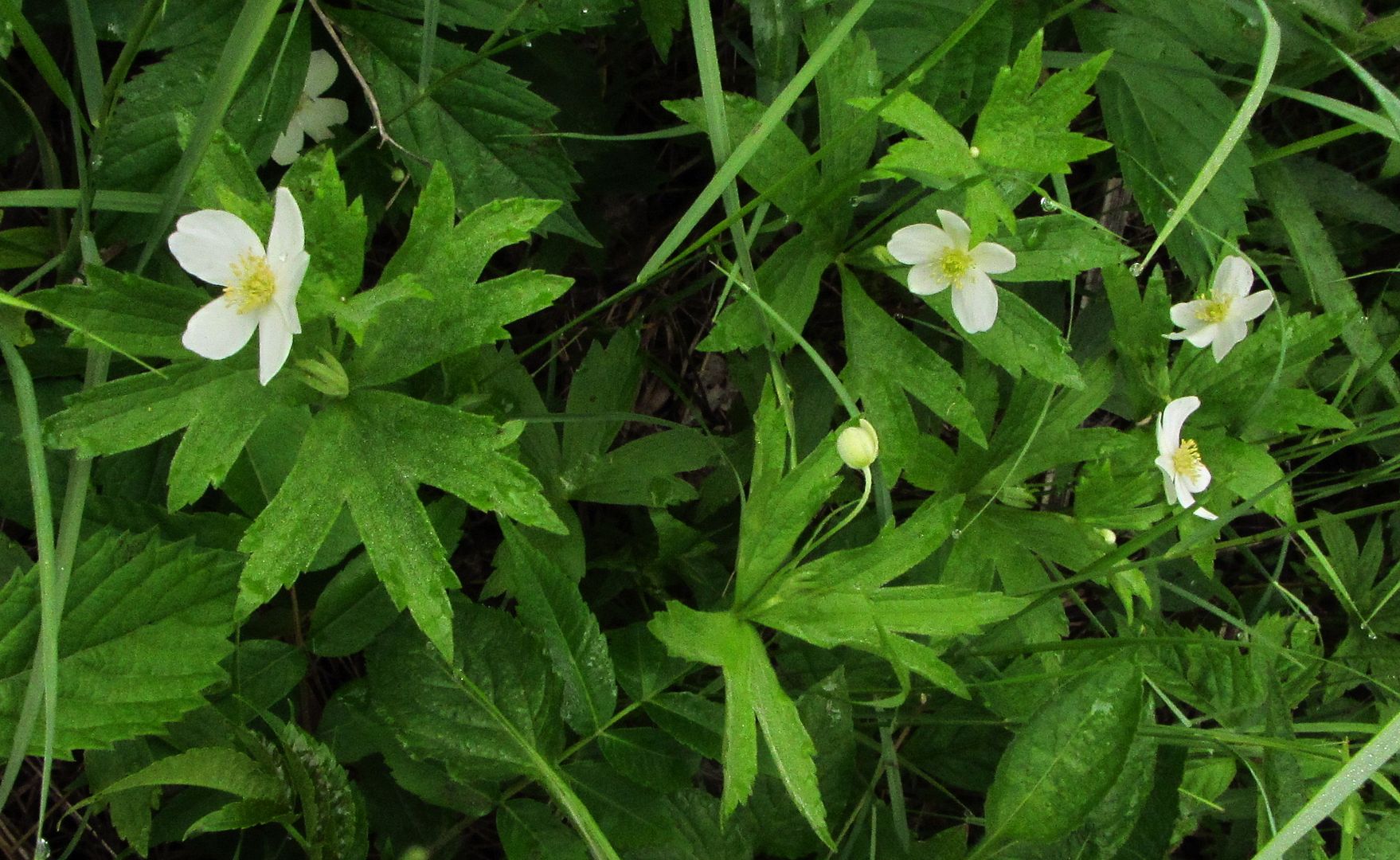
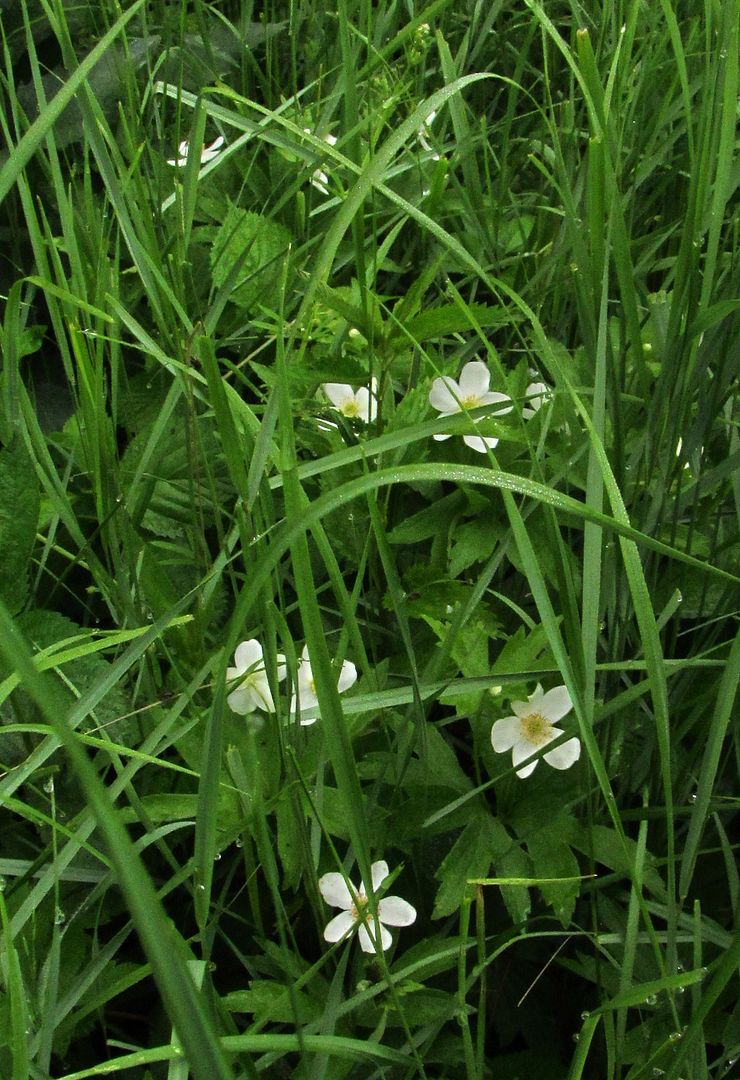

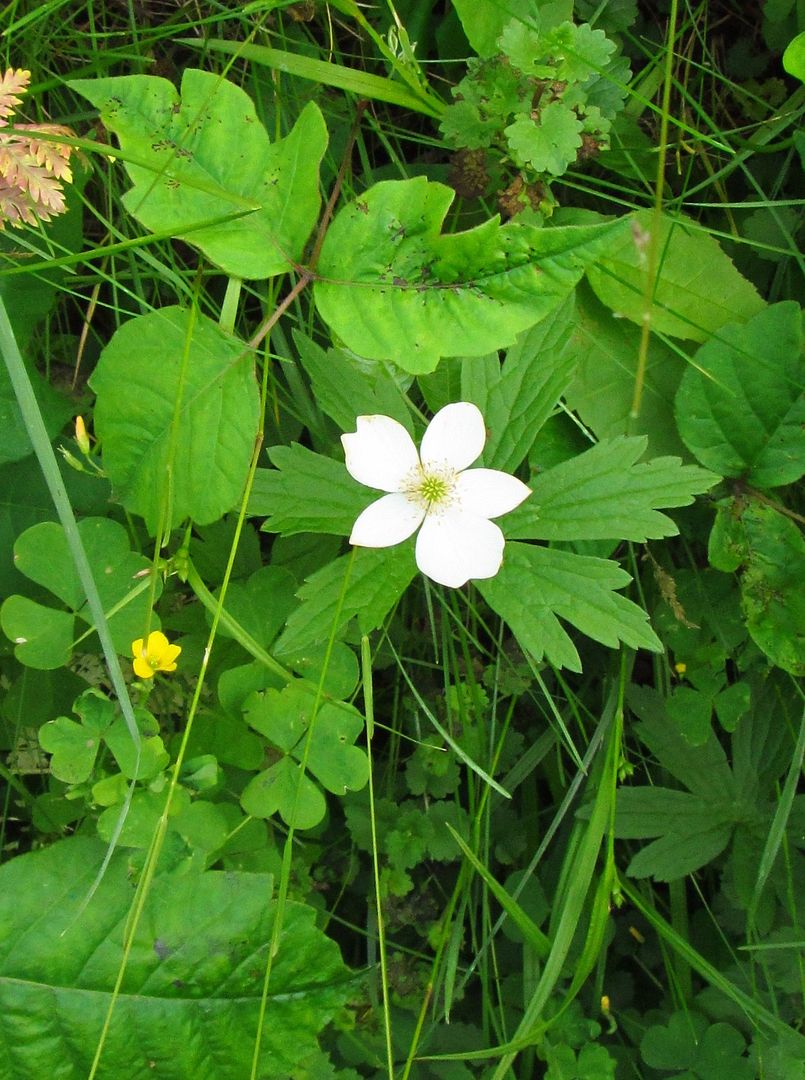
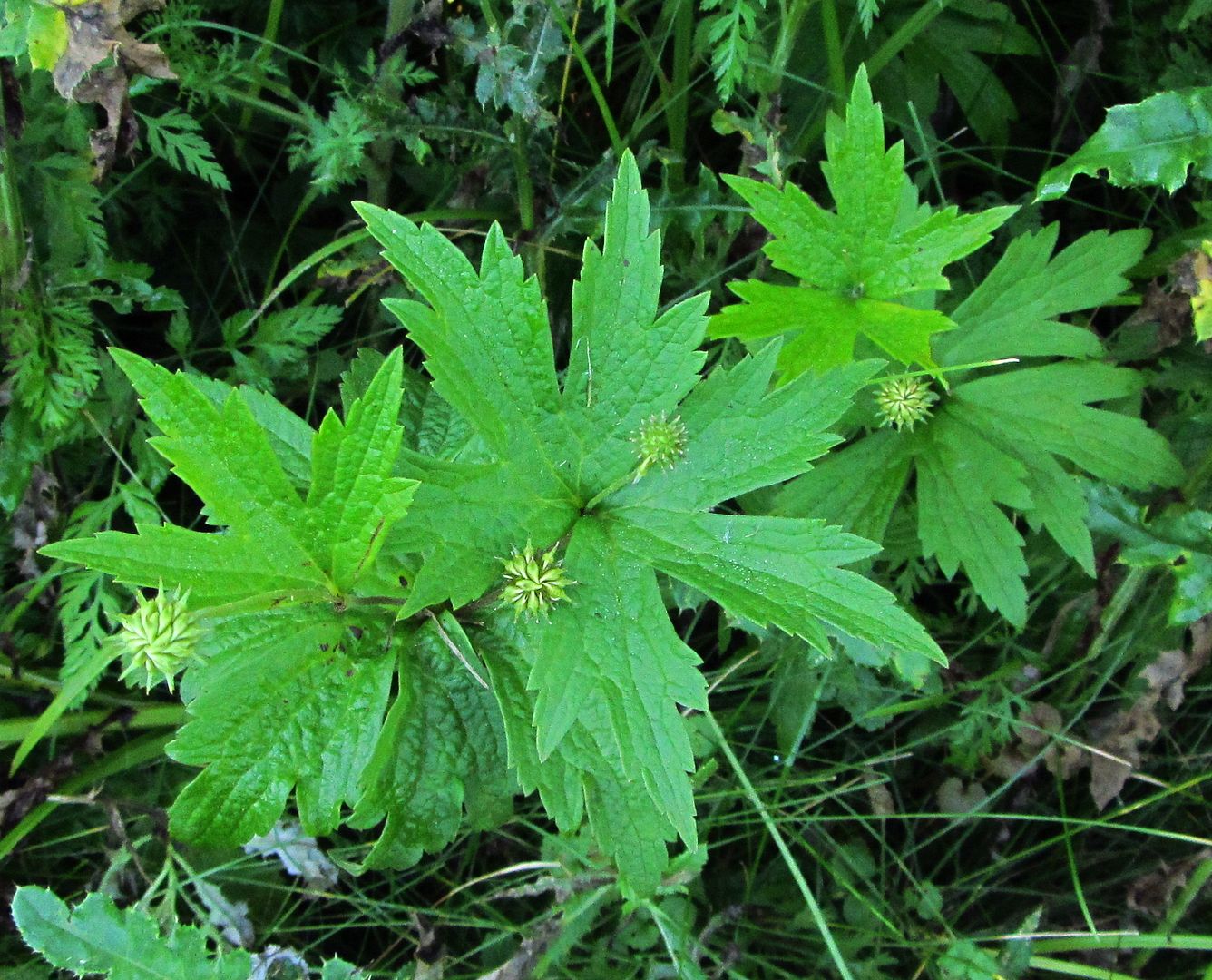
1 Comment
Canada anemone
Beautiful photos as always! They are a pleasure to see. Canada anemone has staying power and is often found on the edges of Iowa gravel roads where few if any other native prairie plants still survive.
Ironically, it is seldom found in typical Iowa prairie plantings. Getting the seeds to germinate is often a challenge — it spreads much more easily from rhizomes.
A flower almost always seen only in plantings in Iowa is purple coneflower. It’s a usually-reliable indicator that a prairie area is a reconstruction rather than an original prairie.
And I think that pretty little yellow flower is probably Oxalis stricta, yellow wood sorrel. It’s a nice little native that don’t get no respect because it is usually found in disturbed areas. But it attracts some little native bees and other insects, and the seeds are eaten by wildlife, and the sour leaves are edible for most humans as long as we eat only a few of them to avoid getting too much oxalic acid. People sometimes throw just a few of them into salads.
PrairieFan Wed 12 Jul 7:54 PM